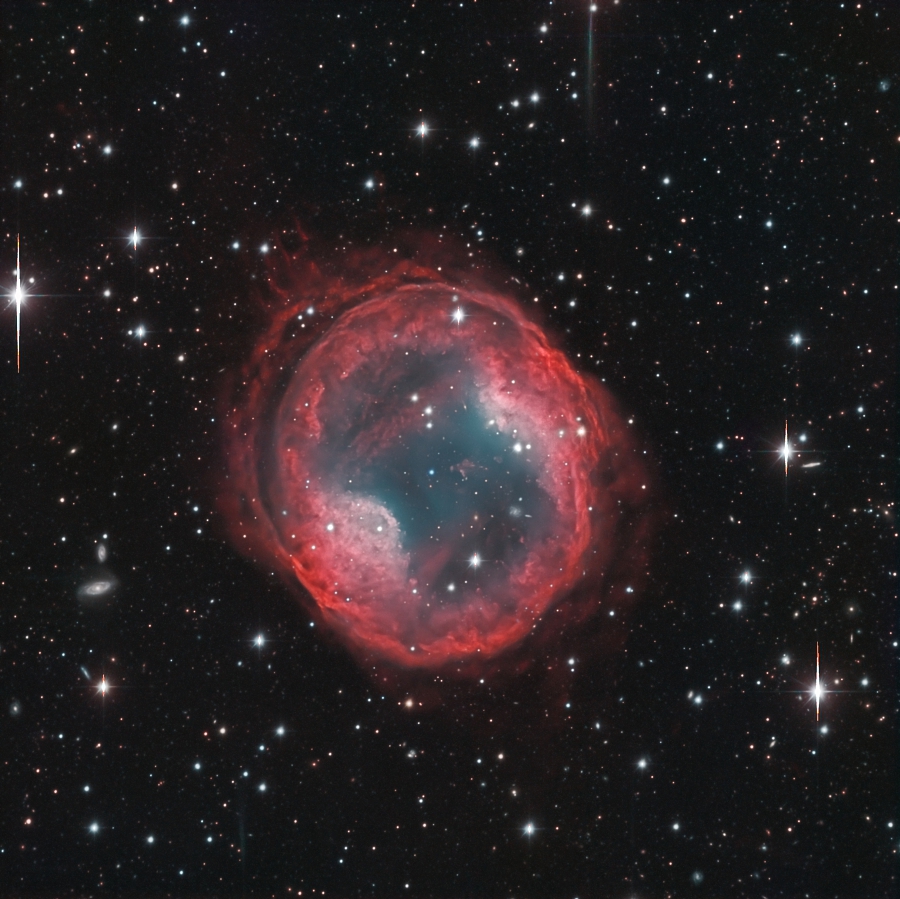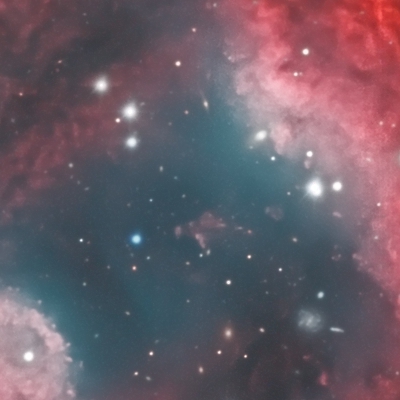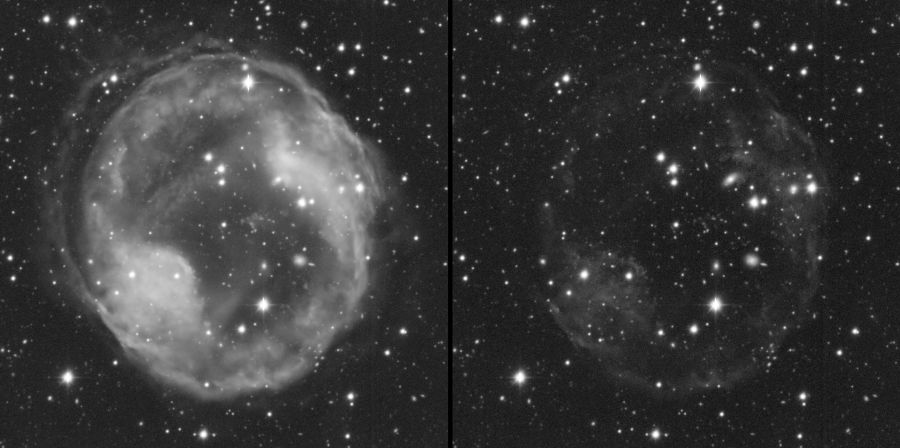PK164+31.1 — The Best-Ever Image of a Poorly Known Nebula
This image is, probably, the best one ever obtained of PK164+31.1, a poorly known planetary nebula 1600 light-years away in the Lynx constellation.
Text: David Galadí-Enríquez
English translation: Alberto Fernández-Soto
Image acquired with the 1.23 meter Zeiss telescope at Calar Alto Observatory.

Click to download a full-resolution image.
Image Caption and Credits: Image of the planetary nebula PK164+31.1 in Lynx, from the Documentary Photo Gallery of Calar Alto Observatory (Descubre/CAHA/OAUV/DSA). Vicent Peris (OAUV/DSA/PTeam), Jack Harvey (DSA/SSRO/PTeam). Entirely processed with PixInsight 1.7. Click on the image to download a full-resolution version (image scale: 0.5 arcsec per pixel)
Links to the Images and Related Material
The Image
 This image has been created within the collaboration between Descubre Foundation, the Centro Astronómico Hispano Alemán (CAHA), the Documentary School of Astrophotography (DSA) and the Astronomical Observatory of the University of Valencia (OAUV). Data have been acquired using the 1.23 meter Zeiss telescope at Calar Alto Observatory, and processed using PixInsight. The final image results from the combination of 28 hours of exposure time taken through R, G, B and H-alpha filters (5:20 hours with each one of the RGB filters, and 12 hours with H-alpha). The field of view is 15.5 arcminutes across, North is up and East is left.
This image has been created within the collaboration between Descubre Foundation, the Centro Astronómico Hispano Alemán (CAHA), the Documentary School of Astrophotography (DSA) and the Astronomical Observatory of the University of Valencia (OAUV). Data have been acquired using the 1.23 meter Zeiss telescope at Calar Alto Observatory, and processed using PixInsight. The final image results from the combination of 28 hours of exposure time taken through R, G, B and H-alpha filters (5:20 hours with each one of the RGB filters, and 12 hours with H-alpha). The field of view is 15.5 arcminutes across, North is up and East is left.
Descubre Foundation introduces what is probably the best image of this nebula available to date. It has been made possible thanks to the sky quality at the Calar Alto Observatory, its instrumentation, and a very careful planning, acquisition, and analysis of the astronomical data. Owing to the high quality of the image, minute structural details of the ionisation front are revealed. At the same time, many stars in our galaxy are also seen, as well as a backdrop of distant galaxies, some of them observed through the veil of the nebula itself.
The PK164+31.1 Planetary Nebula
PK164+31.1, also known as Jones-Emberson 1, is a planetary nebula positioned in the celestial Southern Hemisphere, in the discreet Lynx constellation. Its low surface brightness and moderate angular size (six arcminutes, similar to a one euro coin seen from 15 meters distance) make it hard to discern with a telescope, which makes for its relative lack of fame. It is, however, a very attractive target for astrophotography.
Planetary nebulae represent the final stage in the life of low-mass stars (those below eight solar masses). During their final energetic breakdown, these objects expel their outer layers towards interstellar space, and this material is ionized and illuminated by the stellar cadaver left in its center, a white dwarf. Our own Sun will go through this process in approximately five thousand million years.
PK164+31.1 lies approximately 1600 light-years away, and its small apparent size translates into a diameter of approximately 3 light-years, a distance similar to that from the Sun to its nearest stellar neighbour, alpha Centauri. Thus, if an astrophographer living in a planet close to PK164+31.1 took an image of our Sun, both ourselves and alpha Centauri would fit in a circle with the apparent size PK164+31.1 shows to us.

Click to download a full-resolution image.
The figure above is a comparison of an R-band image of the planetary nebula PK164+31.1 (left), and the same image after subtraction of the narrow-band H-alpha image (right). H-alpha light traces the presence of ionized Hydrogen, which is the main constituent of the nebula, and also light from excited Nitrogen atoms. Subtracting it renders the nebula almost transparent, and allows us to observe galaxy clusters behind it. The remaining nebular light comes from other excited atomic species emitting in the R-band (600-700 nm window) as, for example, Sulphur.
All the material on this page is copyright. Feel free to use it for personal study or evaluation purposes exclusively. Any other use, including without limitation the public reproduction, online storage and generation of derivative works, is strictly prohibited without prior written consent from Pleiades Astrophoto S.L.